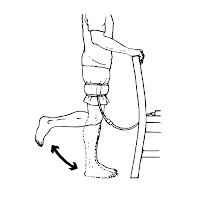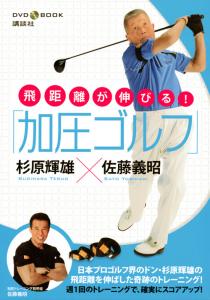For what? Strength, stamina, functional movement, mobility, flexibility, recovery
 Many individuals are initially attracted to KAATSU the original BFR due to cosmetic reasons and weight loss goals. They simply want to lose weight or tone their bodies in some way.
Many individuals are initially attracted to KAATSU the original BFR due to cosmetic reasons and weight loss goals. They simply want to lose weight or tone their bodies in some way.Dr. Yoshiaki Sato, the inventor of KAATSU, writes that thigh muscles are strengthened and legs can be slimmed (toned) especially when people are overweight and they experience swelling or have loose skin in their lower body. Swelling is relieved by promoting blood circulation - which is what KAATSU can achieve for people.
In order to strengthen your inner thighs or tone your quadriceps and hamstrings, you can spin easily on a stationary bicycle or casually do KAATSU Walking for 10-20 minutes. This can be done using the KAATSU Cycle mode or a lower pressure in the KAATSU Training mode.
Alternatively, you can do these following exercises 10 - 20 times each.
Exercise #1
You can lie flat on your back on the floor with your hands clasped behind your head. Lift your legs together straight up from the floor.
Concentrate on the muscles of your inner thigh and open your legs as widely as possible and then slowly close them 10-20 times.
It will not be easy in the beginning, but your legs will gradually get stronger and more toned.
When the veins and capillaries are engorged in blood, it takes incrementally more energy for our vascular system to expand and contract. When more energy is used, more calories are burned which is why daily KAATSU usage leads to effective body toning.
Exercise #2
If this is not possible in the beginning, you can do simple KAATSU Walking (i.e., walking comfortably with the KAATSU Leg Bands on) for up to 20 minutes - or even longer if you use the KAATSU 3-Point Exercises for your Legs in the comfort of your home. You can do KAATSU Walking in the KAATSU Cycle mode at your Optimal Pressure or at a lower pressure (e.g., 50-75% of your Optimal Pressure) in the KAATSU Training mode.
The KAATSU Air Bands should be placed snugly on your legs. Snugly means that you can put one finger between the KAATSU Air Bands and your skin - but not two or three fingers. If you can put two or three fingers between the bands and your skin, the bands should be manually tightened a bit more.
Exercise #3
You can stand straight with your arms placed on your hips. Spread your legs wider than your shoulders and stand with your toes pointed outward. While exhaling, lower your hips slowly as low as you can safely go. Then return to your standing position in order to strengthen the muscles of your inner thighs.
Exercise #4
Alternatively, you can stand straight with your arms placed on your hips. Spread your legs wider than your shoulders and turn your toes inward. Lower your hips as much as safely possible to the level where your knees touch each other. Then slowly return to the standing position in order to strengthen the muscles of your outer thighs.




 Exercise #5
Exercise #5KAATSU 3-point Exercises are also a fundamental part of the standard KAATSU protocol for your legs, for anyone of any age that can be done anywhere anytime (including at home watching television or working on a laptop or during travel).
Dr. Sato first established and fine-tuned the KAATSU 3-point Exercises during the 1970s for individuals of all ages and from all backgrounds whether they are athletes or deconditioned overweight individuals. These simple exercises have been performed safely and effectively among millions of individual KAATSU sessions among people of all ages and abilities with myriad physical conditions or ailments.
The KAATSU 3-point Exercises can either be used to help determine the optimal SKU pressure or as a form of basic exercise for both the arms and legs. After the Base SKU (manually applied pressure) is established, then the KAATSU 3-point Exercises is a means to determine if the Optimal SKU (inflated pressure of the pneumatic bands) is appropriate (read a more detailed explanation here).
Alternatively, especially for Baby Boomers and adults who are being reconditioned back to a state of wellness through a simple exercise program, the KAATSU 3-point Exercises can consist of their entire KAATSU training program.
When the KAATSU 3-point Exercises are performed, the exercises can be performed either on a KAATSU Master 2.0 or a KAATSU Cycle 2.0 unit. The KAATSU 3-point Exercises can be performed while the user is either tethered (connected) or untethered (disconnected) to the units.
Exercise #6: KAATSU Leg 3-point Exercises [illustrations posted on left]
The KAATSU 3-point Exercises for the legs are either defined as Standard or Advanced.
Standard KAATSU 3-point Exercises
The Standard KAATSU 3-point Exercises for the legs includes Toe Curls, Toe Raises, and Sitting Heel Raises. These are all performed while you are seated comfortably with good posture on a chair. In general, these are preferred for older or less fit individuals or those just starting an exercise program or KAATSU.
Advanced KAATSU 3-point Exercises
The Advanced KAATSU 3-point Exercises for the legs are alternatively used by more fit or active individuals or for those individuals with more experience in KAATSU. These 3 basic exercises includes Heel Raises, Standing Leg Curls and Quarter Squats. The Heel Raises can be done while either sitting (easier) or standing (harder). The Standing Leg Curls can be performed while standing and holding onto a chair or balancing against a wall. The Quarter Squats (or "chair touches") can be performed while bending the knees to touch a chair and then popping back up.
Ideally, the Quarter Squats are "non-lock" (partial extension) so that your muscles are constantly engaged and there is no rest while your knees are "locked" straight (in a full extension). This will build up fatigue and lactic acid more quickly.
Pace, Interval and Repetitions
Each set of exercises can be done 3-4 times each with a maximum of 20 seconds between each set. Ideally, the number of repetitions for each exercise decreases before the user reaches muscular or technical failure (or fatigues).
That is, an ideal set would be 25-40 repetitions on set #1, 10-15 repetitions on set #2, and 3-10 repetitions on set #3. But the number of repetitions is not set in stone and can be modified to fit your goals and muscle fatigue. Even if only 1-2 repetitions are completed on your last set, a failure signal is sent through your central nervous system to your brain - and this is part of the biochemical reaction in our bodies that is the goal of KAATSU.
The movements can all be done slowly and deliberately - there is no need to move quickly or vigorously as you may do with a set of burpees or high intensity exercises.
Exercises #7
With the KAATSU Cycle 2.0 unit in the Cycle mode, you can also do regular housework (e.g., washing dishes, folding clothes, cleaning up the house, vacuuming) or yardwork (e.g., sweeping, cleaning the car or windows, watering the lawn) with your leg bands on. This is a casual form of exercise is sufficient to serve as a catalyst for the biochemical reactions of KAATSU.
Exercises #8
With the KAATSU Cycle 2.0 unit in the Cycle mode, you can also do regular activities like brushing your teeth, putting on makeup, packing your bags or walking your dog, or simply watching television. This is a casual form of exercise is sufficient to serve as a catalyst for the biochemical reactions of KAATSU.
KAATSU Arm 3-point Exercises [illustrations posted here]
The KAATSU 3-point Exercises for the arms involves Hand Clenches, Biceps Curls and Tricep Extensions. Each set of exercises is done 3 times each with a maximum of 20 seconds rest between each set. Ideally, the number of repetitions for each exercise decreases before you reach muscular or technical failure.* But you do not have to go incredibly hard or do any vigorous movements. Everything can be performed casually so muscle toning and body slimming can be achieved.
An ideal set would be 25-40 repetitions on set #1, 10-15 repetitions on set #2, and 3-10 repetitions on set #3. But, similar to the recommendations above for your legs, the number of repetitions is not set in stone and can be modified to fit your goals and muscle fatigue. For example, if you can only do 1-2 repetitions on your last set, or you cannot do 25-40 repetitions on your first set, it is OK. The biochemical reaction in our bodies will still occur as the result of KAATSU Cycles.
* Technical failure is defined when you start to do improper technique (movement) due to an increasing sense of fatigue. At this point, you should stop your set and rest.
Copyright © 2014 - 2019 by KAATSU Global
























